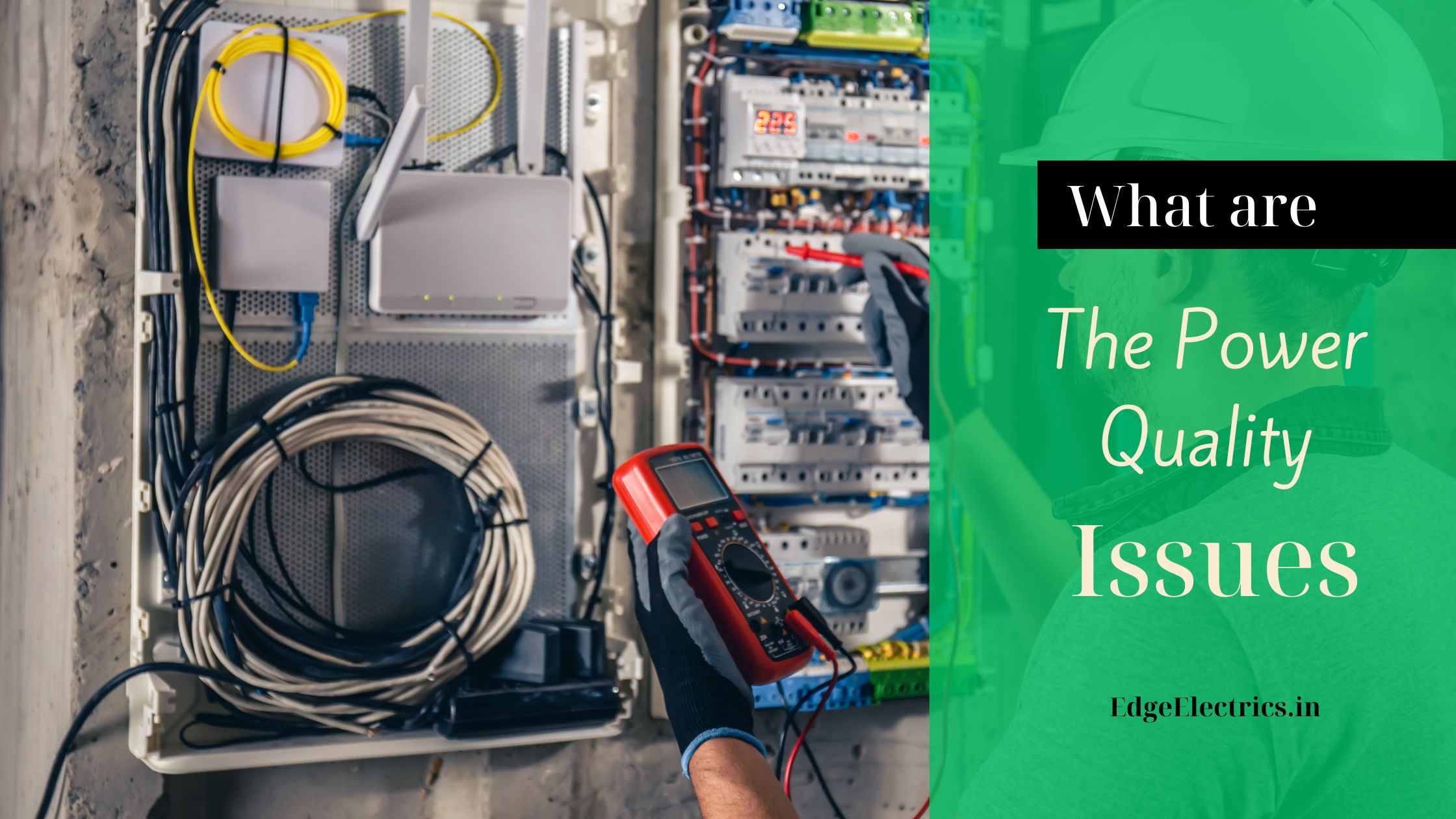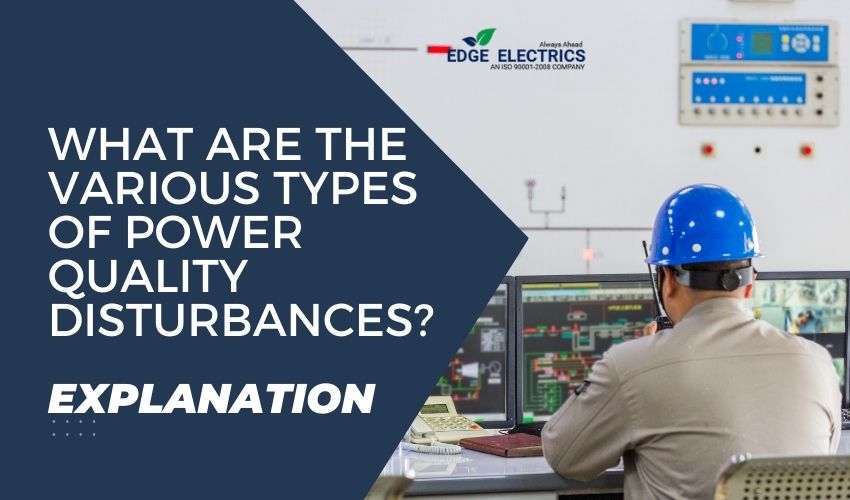
Ensuring good power quality is crucial in electrical systems. As it can prevent equipment damage, reduce downtime, and improve overall system efficiency. By being aware of the root causes of power quality issues, including harmonics, fluctuating voltage, and inadequate grounding.
Businesses and households alike can take steps to improve their power systems and protect their equipment.
When power quality is upheld, equipment operates at its optimal levels, which minimizes the risk of damage, reduces downtime, and enhances overall system efficiency.
Conversely, poor power quality can lead to significant issues, including equipment malfunctions, overheating, and frequent shutdowns, disrupting both residential and commercial environments.
These primary causes of power quality issues can be identified and mitigated through effective strategies. Implementing solutions such as surge protectors, voltage stabilizers, and regular system monitoring can significantly enhance power stability.
What Are the Major Causes of Power Quality Issues?
Power quality issues arise from various disruptions in the electrical system, impacting both homes and businesses. These problems can diminish the efficiency, reliability, and lifespan of electrical devices, making it crucial to understand their origins.
The most prevalent power quality concerns include voltage sags and surges. Voltage sags are sudden drops in voltage, often triggered by heavy electrical loads or short circuits, while surges are temporary spikes caused by switching activities or lightning strikes. Both can result in equipment malfunction or damage.
Harmonics also significantly contribute to power quality issues. Harmonics are distortions in the waveform typically caused by non-linear devices such as computers, LED lights, and industrial machinery, which disrupt the normal sine wave of electricity, leading to inefficiency and potential overheating.
Other contributing factors include transient voltages—brief, intense voltage spikes from switching operations or lightning—and frequency variations, which occur when the power grid’s frequency deviates from the standard level, affecting systems that rely on synchronized timing.
Lastly, power interruptions (blackouts and brownouts) can disrupt operations and lead to data loss, often stemming from grid overloads, maintenance work, or weather-related failures. Understanding these causes is essential for implementing preventive measures to safeguard electrical systems and ensure smooth operation.
What is power quality?
Power quality refers to the consistency and reliability of electrical power delivered to homes, businesses, and industrial facilities. When power quality is high, electricity is supplied with minimal disturbances, allowing all devices and systems to operate effectively and safely. Ideally, the power should maintain the correct voltage, a frequency of 50 or 60 Hz depending on the region, and a perfect sine wave form. This stable power profile enables electrical equipment to function optimally without the risk of damage from fluctuations or irregularities.
However, when the power deviates from this ideal profile, power quality issues can occur. These issues may manifest as voltage fluctuations, frequency instability, or waveform distortions, all of which can negatively impact the operation and performance of electrical systems. Sensitive devices such as computers, medical equipment, and industrial machinery are particularly vulnerable to these variations. Problems like voltage sags, surges, and harmonic distortions can lead to malfunctions, data loss, or even permanent damage to equipment.
Main causes of power quality issue:
voltage Sags and Surges : Voltage sags aka voltage dips occur when the voltage drops below normal levels, often due to large motor startups, short circuits, or heavy electrical loads. In contrast, voltage surges are spikes in voltage. That can happen because of equipment switching, sudden reductions in load, or external factors like lightning strikes. Both sags and surges can be harmful to sensitive electronics, particularly in industrial settings.
Harmonics
Harmonics refer to distortions in the electrical waveform. Typically caused by nonlinear loads such as computers, LED lighting, and variable frequency drives (VFDs). These devices draw power in pulses instead of a smooth sine wave. Leading to waveform distortion that can cause overheating, reduced efficiency, and potential equipment damage.
Transient Voltages (Voltage Spikes): Transient voltages, or voltage spikes, are sudden increases in voltage usually triggered by switching operations, lightning, or large inductive loads. Although these surges are brief. They can be intense enough to damage electronic devices. Which may be vulnerable to even a short burst of high voltage.
Frequency variation:Frequency variations in electric power are typically kept within a narrow tolerance. However, grid instability, malfunctioning generators, or operational imbalances can lead to frequency fluctuations. Affecting systems that rely on synchronized operation, such as clocks or synchronous motors
Power Interruptions (Blackouts and Brownouts): Power interruptions, including blackouts and brownouts, occur when there is a decrease in power availability. Blackouts represent total interruptions, while brownouts indicate partial voltage reductions. These situations can arise from power grid overloads, natural disasters, or planned maintenance, leading to various disruptions in operations.
Power factor issues:Power interruptions, including blackouts and brownouts, occur when there is a decrease in power availability. Blackouts represent total interruptions, while brownouts indicate partial voltage reductions. These situations can arise from power grid overloads, natural disasters, or planned maintenance, leading to various disruptions in operations.
High-Quality Electrical Components:Lastly, using high-quality electrical components designed to withstand fluctuations can improve resilience against power disturbances. This proactive approach helps reduce failures, enhances system reliability, and ultimately controls energy costs by maintaining safe and stable operations.
Power quality issues are increasingly concerning for both residential and commercial electrical systems. By understanding and addressing the primary causes of these problems. Such as voltage sags, harmonics, and power interruptions—homeowners and businesses can lower energy costs, prolong the lifespan of their equipment. It also prevent expensive disruptions.
Consequences of Power Quality Issues:
Power quality issues can lead to a variety of problems, potentially damaging both residential and industrial electrical systems. Here are some significant consequences:
Equipment Malfunction: Sensitive devices may experience malfunctions due to fluctuations in voltage or frequency, impacting their performance or causing unexpected shutdowns. This is particularly concerning for equipment that requires tightly controlled power conditions, such as computers or medical devices.
Data Corruption: Power disturbances, whether from sudden drops or transient surges, can lead to data loss or corruption, especially in computing environments. This may result in lost transactions, compromised data integrity, and potential legal liabilities for businesses.
Overheating: Harmonics and waveform distortions place additional stress on electrical systems, leading to overheating. This not only raises the risk of fire but can also shorten the lifespan of components, increasing maintenance needs. Increased Energy Costs: Poor power quality can create energy inefficiencies, causing equipment to consume more power than necessary. This can result in higher electricity bills for businesses due to power losses, particularly with a low power factor.
Productivity Losses and Downtime: In an industrial context, this can lead to equipment failures or unplanned downtime, directly impacting productivity. The costs associated with repairs and downtime can further diminish operational efficiency. Addressing power quality issues can help prevent these consequences, ensuring reliability, safety, and cost-effectiveness.
Preventing power quality issues is crucial for ensuring that electrical systems function efficiently, safely, and without failures. This approach significantly reduces risks and protects sensitive devices.
Voltage Stabilizers and Surge Protectors:Voltage Stabilizers and Surge Protectors are essential as they help shield devices from harmful voltage sags, surges, and transient spikes. Voltage stabilizers maintain a consistent power level, while surge protectors absorb and redirect sudden voltage spikes. It also preventing them from damaging sensitive equipment.
Power Conditioners:Power Conditioners enhance this protection by managing both harmonics and transient disturbances, ensuring that the electricity supplied is clean and stable. This is especially vital for equipment that is sensitive to waveform distortions and noise in the power supply
Regular Monitoring and Maintenance: regular monitoring and maintenance play a significant role in the early detection of potential electrical system issues. Routine inspections can identify minor problems before they escalate into major repairs or downtime, ensuring reliance
Conclusion:
Power quality issues are increasingly becoming a concern. For both residential and commercial electrical systems, as disruptions can lead to expensive repairs, shorter equipment lifespans, and operational inefficiencies. These problems occur when the power supply is inconsistent, featuring fluctuations in voltage, frequency, or waveform shape. Common causes include voltage sags and surges, which are sudden drops or spikes in voltage. That can result from heavy equipment loads, short circuits, or weather disturbances. Such fluctuations can damage sensitive electronics and disrupt productivity.
Another important factor is harmonics—distortions in the electrical waveform caused by non-linear loads. Like LED lighting, computers, and industrial machinery. Harmonics can lead to energy losses, overheating, and decreased efficiency in electrical systems. Additionally, power interruptions, such as blackouts and brownouts, can stop operations, cause data loss, and affect business continuity. These interruptions often arise from grid overloads, equipment failures, or natural events.
By recognizing and addressing these issues, homeowners and businesses can take proactive
measures to enhance power quality. Solutions like voltage stabilizers, surge protectors, and
regular maintenance not only help lower energy costs but also improve equipment longevity and
reduce disruptions, creating a more reliable electrical environment.
continue reading
Related Posts
Power Quality Disturbances are voltage sags, swells, spikes, fluctuation and […]
Maintaining Good Power Quality includes several important characteristics such as […]
What is Power Quality Classification? Power quality classification is a […]



